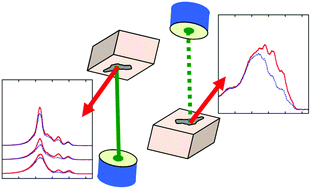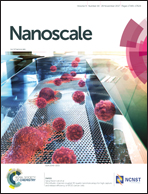Optical polarization of excitons and trions under continuous and pulsed excitation in single layers of WSe2†
Abstract
The potential for valleytronic operation has stimulated much interest in studying polarized emission from transition metal dichalcogenides. In most studies, however, little regard is given to the character of laser excitation. We measure the circularly polarized photoluminescence of WSe2 monolayers as a function of excitation energy for both continuous-wave (cw) and pulsed laser excitation sources. Using cw excitation, the temperature dependence of the depolarization of the trion follows the same trend as that of the neutral exciton and involves collisional broadening. However, the polarization of the trion is nearly twice the polarization of the neutral exciton at low temperatures. When a pulsed laser with the same average fluence is used as the excitation source, the degrees of polarization become very similar, in stark contrast to the cw results. The difference in polarization behaviors is linked to the different amounts of energy deposited in the system during these measurements for similar average fluences. At a moderate fluence, pulsed excitation also has the potential to fundamentally alter the emission characteristics of WSe2.



 Please wait while we load your content...
Please wait while we load your content...